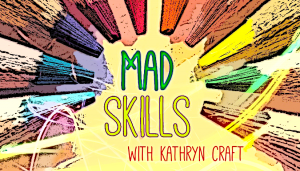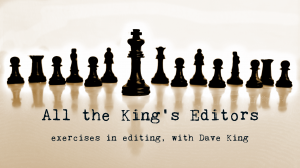paragraphing
photo adapted / Horia Varlan
If the last time you thought about paragraphing was when you learned that a paragraph was comprised of a topic sentence, three supporting sentences, and a conclusion, listen up: that staid structure will not have the power to draw readers into your story.
A paragraph in fiction is rarely used to convey information, as our earliest grammar school compositions were intended to do. The reader didn’t come to your novel to find out what kind of cattle produces the juiciest steaks; she can google that. She wants to know what happens when your aging cowboy, still facing hours in the saddle, has overestimated the stability of his reconstructed knee while an unexpected winter storm is blowing in.
What readers want most of story is to be moved, quite literally—transported, from one place to another. Paragraph structure can boost that sense of story movement. These tips should help.
1. A paragraph should develop only one idea. This sounds simple in theory, but while your mind is juggling god-knows-how-many aspects of story, execution can be fraught. As an editor, it often feels like I’m bringing my pen into the midst of a cattle drive to cut out an errant all-terrain vehicle. The ATV is a distraction, obscuring the reader’s perception of where the cowboy is directing the cattle.
You might argue that the ATV is relevant because the novel is about old methods butting heads with the new. If that’s your point, great—but most readers will miss it if you bury that ATV in the middle of a paragraph. That leads me to my next point. (A paragraph should always set up your next point.)
2. A paragraph should help the reader remember important information. If a beta reader calls you out for reiteration—or worse, if she missed an important aspect of characterization or plot altogether—take a closer look at your paragraphing. A paragraph should support memorability.
My motto: Say it once, with impact, and you won’t have to repeat it.
If your beta reader missed the point of that ATV altogether, pull it from its herd of words, place it in a new paragraph, and give it an entrance to be remembered.
Have your aging cowboy swatting around his head, sure that only an insect wanting a bite out of his ear could create a buzz annoying enough to be heard above the thumping of cattle hooves. It grows louder—now the cowboy and even some of the cattle are looking over their shoulders. The herd shies away from the growing sound. The cowboy’s horse fidgets, necessitating that the cowboy apply pressure from his compromised knee. Then have the four-wheeler come over the rise in a cloud of dust, and give us our first glimpse of the damn fool who lives next door.
3. Order paragraphs so that each sentence builds upon the last. While editing fiction, I’m often re-ordering sentences for maximum impact. When I do, I always suspect the writer came to fiction through journalism.
Read MoreLots of writing books, including Self-Editing for Fiction Writers, will tell you that you can use your paragraphing to emphasize key points. Want something to stand out? Put it in its own paragraph.
Picking which parts of your narrative you want to emphasize is trickier. As a rule of thumb, it’s a good idea to highlight the moments when your scene takes a sudden turn – when your viewpoint character suddenly realizes something, or another character does something surprising, or the mood of the scene simply changes. Just let less important moments develop within a single paragraph.
Today’s selection covers a variety of examples. Two of the mood changes – when Kellyn first feels threatened by the milk guy and when she begins to sympathize with him – are buried mid-paragraph. So is the moment of shock when she spots the sinister man staring at her. The moment when the milk guy first starts dumping milk does begin a new paragraph, but the writer could emphasize it even more by giving the sentence its own paragraph. Her decision to ignore the man in the suit is given its own, single-sentence paragraph, even though it’s a relatively minor development.
This confused emphasis makes it hard to track how Kellyn’s reactions build over the course of the scene. Take the metaphor of the eighteen-wheeler, for instance. It’s a good image, clear and powerful, but we don’t understand why she reacts to milk guy with such panic, then moments later is worrying about only finding change in her purse. If you would like to keep the metaphor, we need some interior monologue to explain her reaction.
Instead, I’ve simply cut it, and adjusted the paragraphing so that her feelings about the milk guy follow a clearer arc, and the panic she feels when she first spots the stranger continues to build.
Because it’s hard to judge the pace of a passage that’s been marked up as much as this one, I’ve decided to include a clean, as-edited copy as well, so you can get a feel for the finished product.
The man at the dairy case was clearly insane, Kellyn decided. [1] Scruffy, unshaven, tattered coat:, he looked homeless. but He didn’t quite smell the part, though, reeking more of paint than filth. The guy picked up a gallon of milk, and muttered something to himself, and put the carton back, either commenting on it or talking about the carton or to it. Interesting. ,
[Paragraph added] [2] bBut that didn’t matter. She Kellyn needed to get a jug of skim for the week. She sidled in and grabbed the nearest half gallon. The man snatched up another carton and . He peered at the label. “Ah,” he said, “ah.”
[Paragraph added] Then hHis fiery gaze fixed on her. “You.” [3]
Read More









